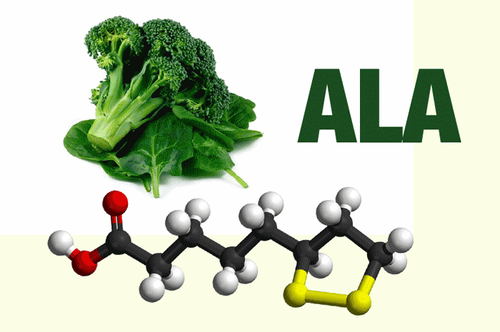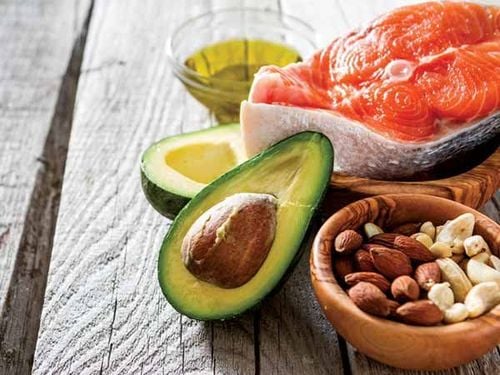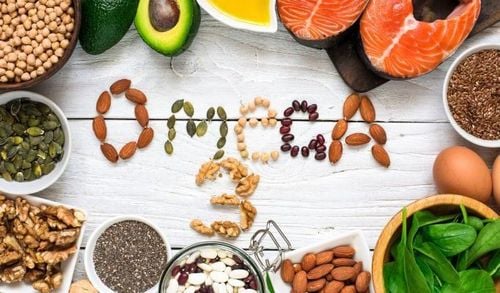This is an automatically translated article.
Vitamin F consists of two fats - alpha-linolenic acid (ALA) and linoleic acid (LA). These are two fats that are essential for the body and good for brain and heart health. ALA is a member of the omega-3 fat family, while LA is in the omega-6 family. Vitamin F is abundant in vegetable oils and nuts.
1. What is Vitamin F?
Vitamin F is not a vitamin understood by the traditional definition. It was discovered in the 1920s when scientists discovered that a fat-free diet had adverse effects on rats. Initially, the scientists suspected the mice were deficient in a new vitamin and named them vitamin F - then found the two components to be ALA and LA.
Two types of fat in vitamin F - ALA and LA - are essential fatty acids for the body, which means they are needed to stay healthy. The body cannot synthesize these fats on its own and must be obtained from the diet.
2. What are the uses of Vitamin F?
ALA and LA play the following important roles in the body:
Provide energy: 1 gram of ALA and LA provides 9 calories of energy. Building cell structure: ALA, LA and other lipids contribute to the structure of cells and are involved in the main component of the cell's outer layer. Promotes growth: ALA plays an important role in growth, vision, and brain development. Convert to other fats: Your body can convert ALA and LA into other fats needed for good health. Helps make signaling compounds: ALA and LA are used to make signaling compounds that help regulate blood pressure, blood clotting, immune response, and other key body functions. Vitamin F deficiency is rare. However, deficiency of ALA and LA can lead to various symptoms, such as dry skin, hair loss, delayed wound healing, poor growth in children, skin sores and scabs, and brain problems. , sight.

ALA và LA đóng vai trò quan trọng đối với cơ thể con người
3. Health benefits
According to research, the fats that make up vitamin F - ALA and LA - may offer some unique health benefits.
3.1. Health benefits of alpha-linolenic acid ALA is the main fat in the omega-3 family, a group of fats that have been shown to have many health benefits. In the body, ALA is converted into other beneficial omega-3 fatty acids, including eicosapentaenoic acid (EPA) and docosahexaenoic acid (DHA). The trio of ALA, EPA, and DHA provide many potential health benefits:
Reduce inflammation: Increasing omega-3 fats like ALA will help reduce inflammation in the joints, digestive tract, lungs. and brain. Improves heart health: Increasing ALA in the diet may help reduce the risk of heart disease. A recent study found that for every 1 gram of ALA consumed per day, the risk of heart disease was reduced by 10%. Promotes growth and development: Pregnant women need 1.4 grams of ALA per day to support fetal growth and development. Mental health support: Regular intake of omega-3 fats can help improve symptoms of depression and anxiety.
3.2. Health Benefits of Linoleic Acid Linoleic acid (LA) is the main fat in the omega-6 family. Like ALA, LA is converted to other fats in the body.
LA offers many potential health benefits when consumed in moderation, especially when used in place of less healthy saturated fats.
Is a heart healthy fat: LA helps reduce the risk of heart disease. In a study of over 300,000 adults, supplementing with LA in place of saturated fat reduced the risk of heart disease-related death by 21%. Lowers risk of type 2 diabetes: A study in more than 200,000 people found that LA reduced the risk of type 2 diabetes by 14% as a daily supplement as an alternative to saturated fat. May improve blood sugar control: Some studies suggest that LA may aid in blood sugar control when consumed as a saturated fat substitute.

Axit linoleic là loại chất béo tốt cho sức khỏe tim mạch
4. Recommended dose
To maximize the benefits of vitamin F, the key is to maintain a balanced LA to ALA ratio in the daily diet. While the ideal number has yet to be determined, some organizations recommend maintaining the ratio at 4:1 or lower.
This balance is important due to their opposing effects in the body. While LA and other omega-6 fats tend to cause inflammation, ALA and other omega-3 fats help inhibit it.
Some experts estimate that the ratio of omega-6 to omega-3 fats in the Western diet can be as high as 20:1. This results in an increased inflammatory response and increased risk of disease. heart disease
5. Foods rich in vitamin F
Supplementing with vitamin F with supplements is not necessary if you eat a lot of foods that contain ALA and LA.
Although most foods typically contain both types of fat, many have a higher percentage of one than the other.
LA-rich foods:
Soybean oil: provides 7 grams of LA in each 15ml tablespoon of soybean oil Olive oil: provides 10 grams of LA per tablespoon 15 ml Corn oil: provides 7 grams of LA per tablespoon 15 ml Sunflower seeds: providing 11 grams of LA in a 28-gram serving Almonds: providing 3.5 grams of LA in a 28-gram serving ALA-rich foods:
Many LA-rich foods also contain ALA, although with lower concentrations of ALA. less quantity. However, particularly high proportions of ALA can be found in:
Flaxseed oil: provides 7 grams of ALA per 15 ml tablespoon Flaxseed: provides 6.5 grams of ALA per 28-gram serving Chia seeds: provides 5 grams of ALA per 28-gram serving Walnuts : provides 2.5 grams of ALA per 28-gram serving Animal products, such as fish, eggs, meat and animal dairy products Grass-fed also provides significant amounts of ALA and LA

Quả óc chó cung cấp một lượng ALA hữu ích cho người dùng
To register for an examination at Vinmec International General Hospital, you can contact the nationwide Vinmec Health System Hotline, or register online HERE.
Reference source: healthline.com













